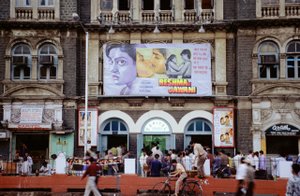The study of Scenography deals with the staging of spaces.
Stage designs are spaces in which imitation and reality merge and, at the same time, they are installations intended to be used. Thus it is only through the active participation of bodies in a space that its texture and effect are completed.They are a form of expression of temporary architecture, places of encounter for spectators and players, where different positions meet.
In the development process of a work for theater, the opera, performances, and other forms of staging, set designers are responsible for the development of a space, and therefore usually for the initial artistic setting in a production. Subsequently, they are also involved in all further processes of development and invention. In institutional terms, this means communicating, cooperating, and, if necessary, differentiating oneself with all personalities in the respective working relationships at a theater or within other artistic and social contexts.
The program offers the space, time, and mentorship to develop individual artistic positions and forms of expression and also to learn to think collaboratively within the complex working relationships in theater and in independent productions. Artistic practice and theoretical content are combined.
The basic techniques taught in the program are research, freehand drawing, design, material science, technical drawing (digital), lighting, model making, costume, make-up design, and dramaturgy, as well as the examination of architecture, art history, politics, sociology, philosophy, music and visual arts. In addition to theater and opera, other manifestations of spaces in media such as film, video, digital art, performance, and art in public space will be explored and worked on.
The focus will be on confronting our present time with the means of art, developing our own working economies and finding our own sources of inspiration or specific knowledge, and transforming them into stage design work. In the process, failure is also an essential component that we constantly have to confront ourselves with.
It is important for the profession of the scenographer to sharpen their optical and spatial awareness, as well as their social and theatrical perception, to see and feel without prejudice, to filter critically, and to make this usable for artistic work.
The study of scenography at the Academy of Fine Arts Vienna does not only aim at graduating with a diploma, but would like to create a free space to experiment with a willingness to take risks and an openness to results.
Univ.-Prof. Nina von Mechow









